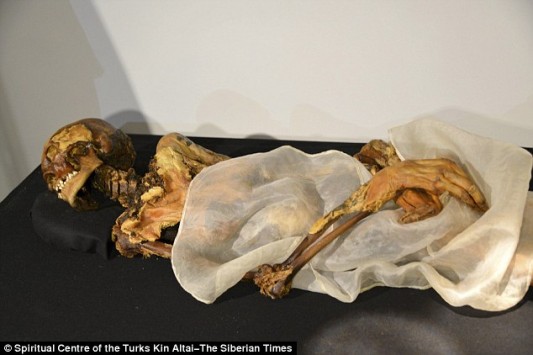
- Φοβούνται την οργή Ρωσίδας πριγκίπισσας 2.500 ετών που ξέθαψαν στη Σιβηρία
- Θα τη θάψουν ξανά και θα της φτιάξουν μαυσωλείο
- Συνδέουν φυσικές καταστροφές με την κατάρα της μούμιας
- Πιστεύουν ότι απαγόρευε την είσοδο στο βασίλειο των νεκρών
Στον τόπο ανάπαυσής της επιστρέφουν τη μούμια μιας Ρωσίδας
πριγκίπισσας 2.500 ετών επειδή φοβούνται πως ευθύνεται για μια σειρά από
φυσικές καταστροφές.Η μούμια ανακαλύφθηκε πριν από 21 χρόνια σε ένα υψηλό οροπέδιο στην καρδιά της νοτιοδυτικής Σιβηρίας.

